Sauna therapy, also known as sauna bathing or Finnish sauna, is a traditional practice that has been used for centuries in many cultures for its observed health benefits. The science behind sauna therapy involves several physiological changes that occur in the body when exposed to high temperatures, typically ranging from 80-100° Celsius in a dry sauna.
One of the most significant effects of sauna therapy is increased sweating, which helps to remove toxins from the body and also promotes healthy skin. Sauna therapy also increases blood flow and circulation, which can help to reduce inflammation and promote healing in the body.
Another benefit of sauna therapy is the stimulation of the body's immune system, which can help to improve overall health and wellness. Sauna therapy has been shown to promote relaxation and reduce stress levels, which can have a positive impact on mental health and physical health.
Research has also suggested that regular sauna therapy may have cardiovascular benefits, such as reducing blood pressure and improving heart function.
The recommended time to stay in a sauna and temperature for the sauna therapy can vary depending on individual health needs, tolerance to heat, and personal preference. However, here are some general guidelines that you can follow:
• Start with a sauna session of 10-15 minutes and gradually increase the time to 30 minutes per session.
• The ideal temperature range for a sauna is typically between 70 and 100° Celsius (160-212° Fahrenheit). But everyone has their own sweet spot. And different sauna types (steam, dry, Russian, Turkish, infrared, etc.) all have different temperatures, humidity levels, and subjective heat experiences.
• Stay hydrated during and after a sauna session, as the high temperatures can cause sweating and loss of fluids. Drink water or other hydrating fluids before, during, and after a sauna session.
People often ask Dr. Coplin about the difference between traditional saunas and infrared saunas. The main difference is the way they heat the body. Traditional saunas use heated air from either wood fired or electrically heated stones to warm the body, while infrared saunas use infrared radiation to penetrate the skin and heat the body directly while keeping the ambient room temperature lower.
Traditional saunas typically operate at higher temperatures, ranging from 70 to 100° Celsius (160-212° Fahrenheit), while infrared saunas operate at lower temperatures, ranging from 50 to 65° Celsius (120-150° Fahrenheit).
Both types of saunas have health benefits, but the specific benefits may differ. This has to do with the biophysical mechanism being stimulated. Traditional saunas have a higher thermal impact on the body and have an advantage for improving cardiovascular function, and stimulating the immune system. Infrared saunas can generate longer sessions of sweating without the thermal stress and can therefore have an advantage in detoxification, and relaxation.
Lets talk about "Aufguss.”
Aufguss is a German word that means "infusion” or "steaming.” In the context of sauna therapy, "aufguss” refers to a sauna ritual that involves pouring water onto the sauna rocks to produce steam, along with the use of various aromatherapy oils, and the waving of towels to circulate the hot air.
During an aufguss session, the sauna guide pours water, sometimes infused with essential oils, onto the sauna rocks, creating a burst of steam that fills the sauna room. The sauna guide then uses a towel to wave the hot air around the room, helping to circulate the heat and fragrance. The process is repeated several times, and can include different essential oils and sometimes accompanying music and light shows.
The aim of an aufguss session is to create an intense and invigorating sauna experience, while also promoting relaxation and detoxification. The infusion of essential oils has additional therapeutic benefits, such as reducing stress and anxiety, boosting the immune system, and improving respiratory function, depending on the oils being used.
Dr. Coplin is famous for his aufguss sessions, and will often combine elements of breathwork, chant, storytelling, and of course steam, to facilitate a considered and elevated sauna ritual.
